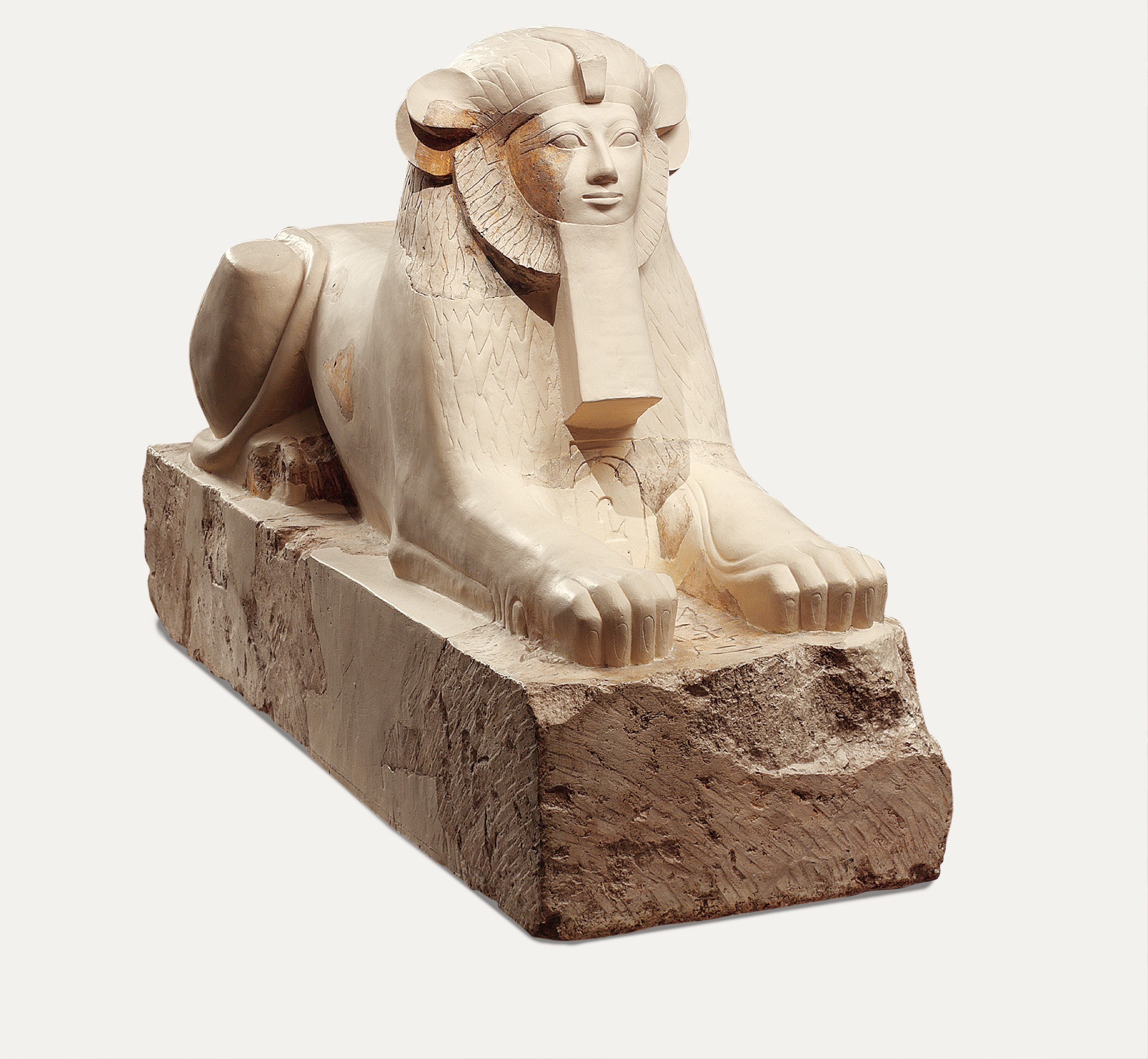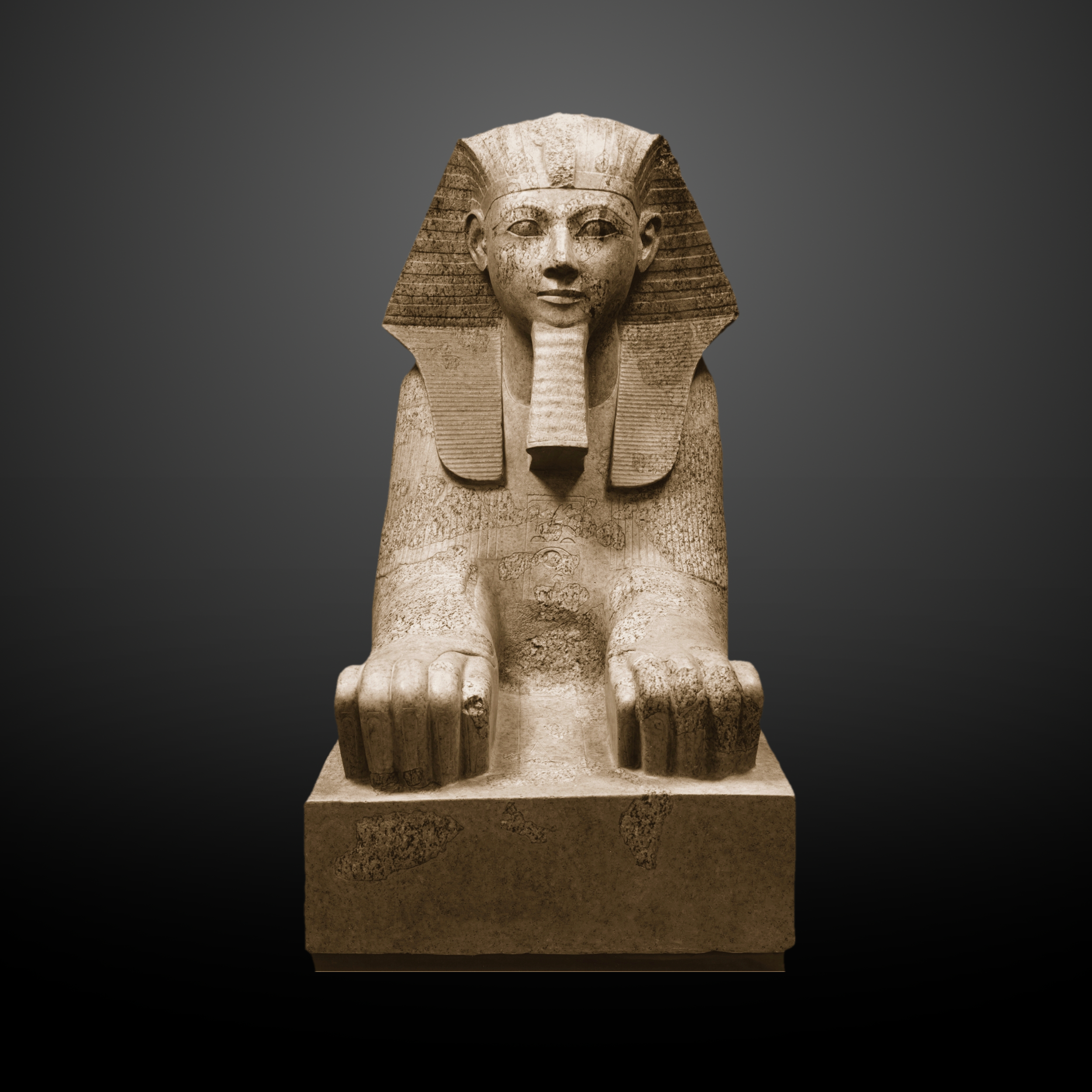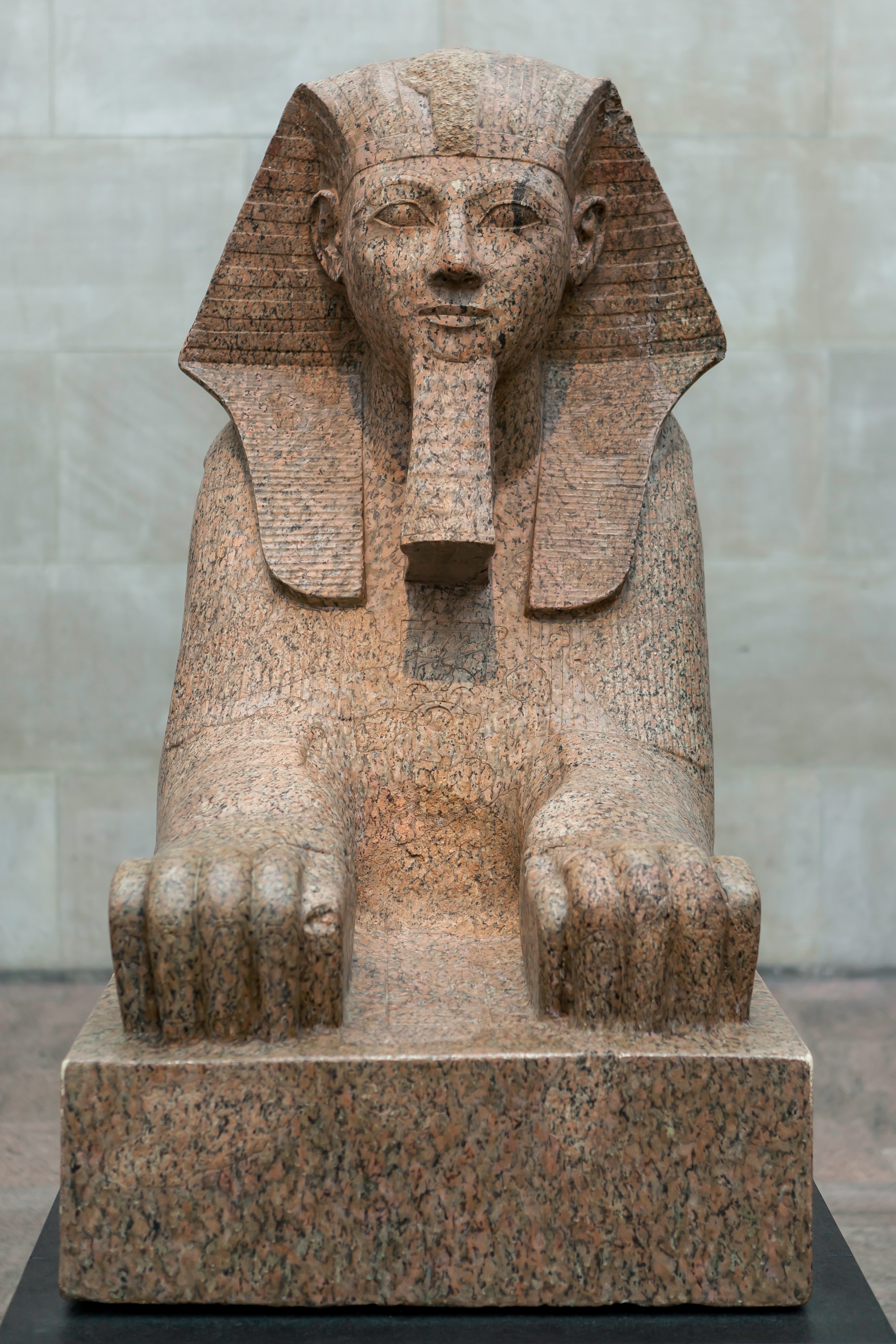This seven-ton granite Sphinx of Hatshepsut has the body of a lion and a human head wearing a head-cloth and royal beard. No of course it is not that massive Great Sphinx in Giza Egypt but his history is also interesting.

Sphinx Of Hatshepsut New Kingdom The Metropolitan Museum Of Art
1479-1458 BCE the Metropolitan Museum of Art New York.

. Explore museums and play with Art Transfer Pocket Galleries Art Selfie and more. It was originally made for Hatshepsuts funerary temple at Deir el-Bahri which is a complex of temples dedicated to pharaohs of her family. A female depicted as a male king a male pharaoh depicted as a woman King Tut disguised as Nefertiti Hatshepsuts pet Each answer shown is correct a female depicted as a male king Georges Seurats Sunday on La Grande Jatte Calendar stone Sun Stone late postclassic Aztec The Emperor Constantine I.
This item is a sphynx of Pharaoh Hatshepsut with a human head and lions body. The Collection Egyptian Art The Female Pharaoh Hatshepsut ca. This is expressed as well in Hatshepsuts funerary tem-ple her greatest visible legacy.
Thats why first what caught my eyes was Sphinx of Hatshepsut. It depicts a seated Hatshepsut in female clothing wearing the nemes crown and is inscribed with her pharaonic throne name Maatkare Truth is the Soul of the Sun and feminized versions of her kingly titles Daughter of Re etc. The sculpture of the Sphinx of Hatshepsut depicts.
Google Arts Culture features content from over 2000 leading museums and archives who have partnered with the Google Cultural Institute to bring the worlds treasures online. She is considered to be one of Egypts most successful rulers. This colossal sized head and shoulder bust depicts Hatshepsut the female pharoah who came to the throne of Egypt in 1478BC and reigned for about 20 years.
This colossal sphinx portrays the female pharaoh Hatshepsut with the body of a lion and a human head wearing a nemes headcloth and false beard. In the columns of text inscribed beside her legs on the front of the throne she has already adopted the throne name Maatkare but her titles and epithets are still feminine. It would have earned its patron a special role in Egyptian and architectural histo- ry whether built by a female or male.
It is not easy to recognize womens face in this item hidden under the royal beard and head cloths. This sculpture was part of a sphinx which was lost many years ago. It stands at 64 58 inches and width of 35 38 inches.
Sphinx of Hatshepsut ca. On view at The Met Fifth Avenue in Gallery 131. She made sure not to be mistaken for anything but a legitimate pharaoh.
The sculpture of the Sphinx of Hatshepsut depicts. A female depicted as a male king. This graceful life-size statue depicts Hatshepsut in female attire but she wears the nemes headcloth a royal attribute usually reserved for the reigning king.
This limestone and plaster piece depicts the female pharaoh Maatkare Hatshepsut as a sphinx. Another seated statue from. A female depicted as a male king.
Fals e True Fals e. Many have speculated over the. Carved between the paws of the statue is a cartouche enclosing the pharaohs throne name Maatkare Truth is the Soul of the Sun c.
Carved from seven tons of red granite it is conventionally interpreted as representing the queen herself as a lion-bodied creature with androgynous. Once part of a line of sphinxes that guarded Hatshepsuts great mortuary temple at Deir el-Bahri across the Nile from modern Luxor the 11-foot-long sculpture now faces the center of the Great Hall. Sculpture depicts her as a sphinx.
The large sphinx is made of granite with traces of yellow and blue paint. 14791458 BC is a sculpture of Pharaoh Hatshepsut as a sphinx made of granite that is attached to a rectangular base on the bottom. Measuring 240 feet 73 meters long and 66.
See more articles in category. The self-portraits by John Coplans and Cindy Sherman ________. Carved from seven tons of red granite it is conventionally interpreted as representing the queen herself as a lion-bodied creature with androgynous.
This is expressed as well in Hatshepsuts funerary tem- ple her greatest visible legacy. She has the body and mane of a lion with the head of a human. 1479-1458 BCE the Metropolitan Museum of Art New York.
Artworks depicting men have historically referred to their powerful bodies or depicted them in leadership roles. New Kingdom On view at The Met Fifth Avenue in Gallery 115 This graceful life-size statue depicts Hatshepsut in female attire but she wears the nemes headcloth a royal attribute usually reserved for. The sculpture of the Sphinx of Hatshepsut depicts.
It depicts the queenking as a sphinx with a lions body and a royal portrait head commanding the entire space with grace and grandeur. Sphinx of Hatshepsut from ca. The sculptor has carefully observed the powerful muscles of the lion as contrasted to the handsome idealized face of the.
Question 5 25 out of 25 points Hatshepsut kneeling depicts the ruler as kneeling in front of her co-ruler. This sphinx is one of several granite sphinxes that once stood in Hatshepsuts mortuary temple at Deir el-Bahri. These majestic statues depicting the king with a lions body and a human headface are epitomes of the kings might and visual manifestations of.
Admin Send an email December 11 2021. Artists can emphasize the importance of a ruler by portraying him or her. Sphinx with crowns of Upper and Lower Egypt.
The statue has the usual symbolic powerful muscles of the lion and the idealized face used for pharaohs. The sculpture of the sphinx of hatshepsut depicts. The sphinx in question dates from the Egyptian New Kingdom and specifically from the reign of Queen Hatshepsut 1479-58 BC who likely commissioned it to guard the route to her funerary temple.
Who was the emperor of rome when jesus was born. The Great Sphinx of Giza is a giant 4500-year-old limestone statue situated near the Great Pyramid in Giza Egypt. Granite Sphinx Statue of Hatshepsut Sphinx statues have a long tradition in Egyptian history the earliest examples dating to the Old Kingdom and the most famous being the great sphinx of Giza.
Question 6 25 out of 25 points The ______________ was moved to higher ground in the 1960s when the Aswan High Dam was built. The statue also has a bull tail that represented the procreative power of ancient Egyptian royalty. This odd combination is evident in a red granite piece on display in the Metropolitan Museum of Art in New York.
Question 5 25 out of 25 points hatshepsut kneeling.

Sphinx Of Hatshepsut New Kingdom The Metropolitan Museum Of Art

Sphinx Of Hatshepsut New Kingdom The Metropolitan Museum Of Art

File Sphinx Of Hatshepsut Jpg Wikimedia Commons

File Sphinx Of Hatshepsut Met 31 3 166 F White Jpg Wikimedia Commons

Sphinx Of Hatshepsut New Kingdom The Metropolitan Museum Of Art

File Sphinx Of Hatshepsut Met 31 3 166 F Gradient Jpg Wikimedia Commons

Sphinx Of Hatshepsut Illustration World History Encyclopedia
Sphinx Of Hatshepsut New Kingdom The Metropolitan Museum Of Art
0 comments
Post a Comment